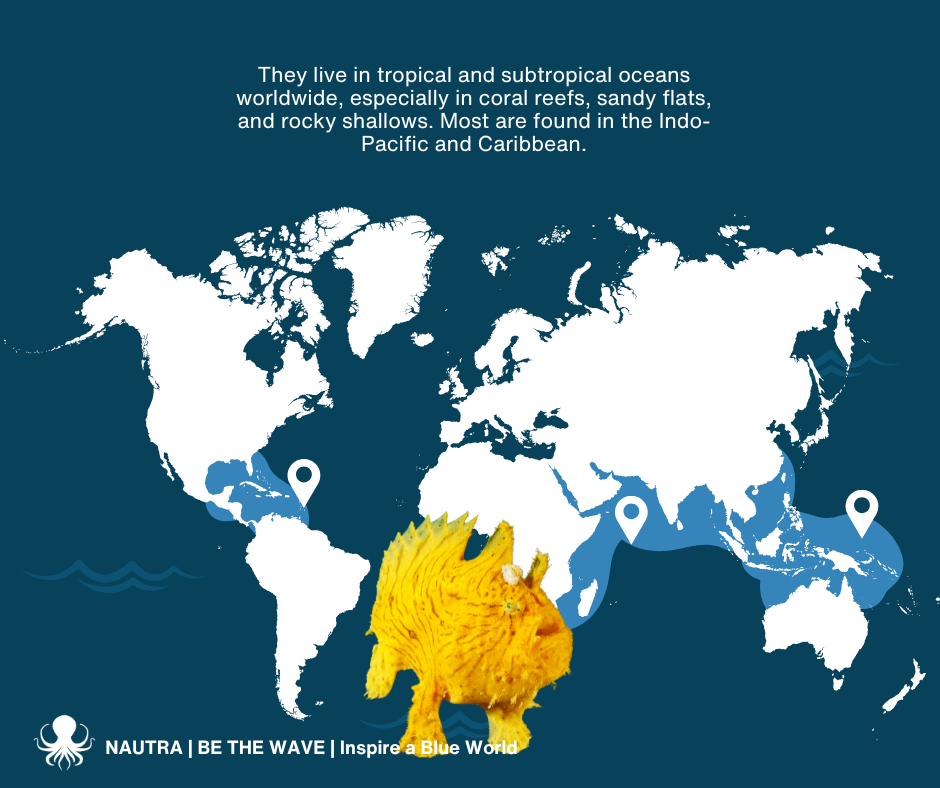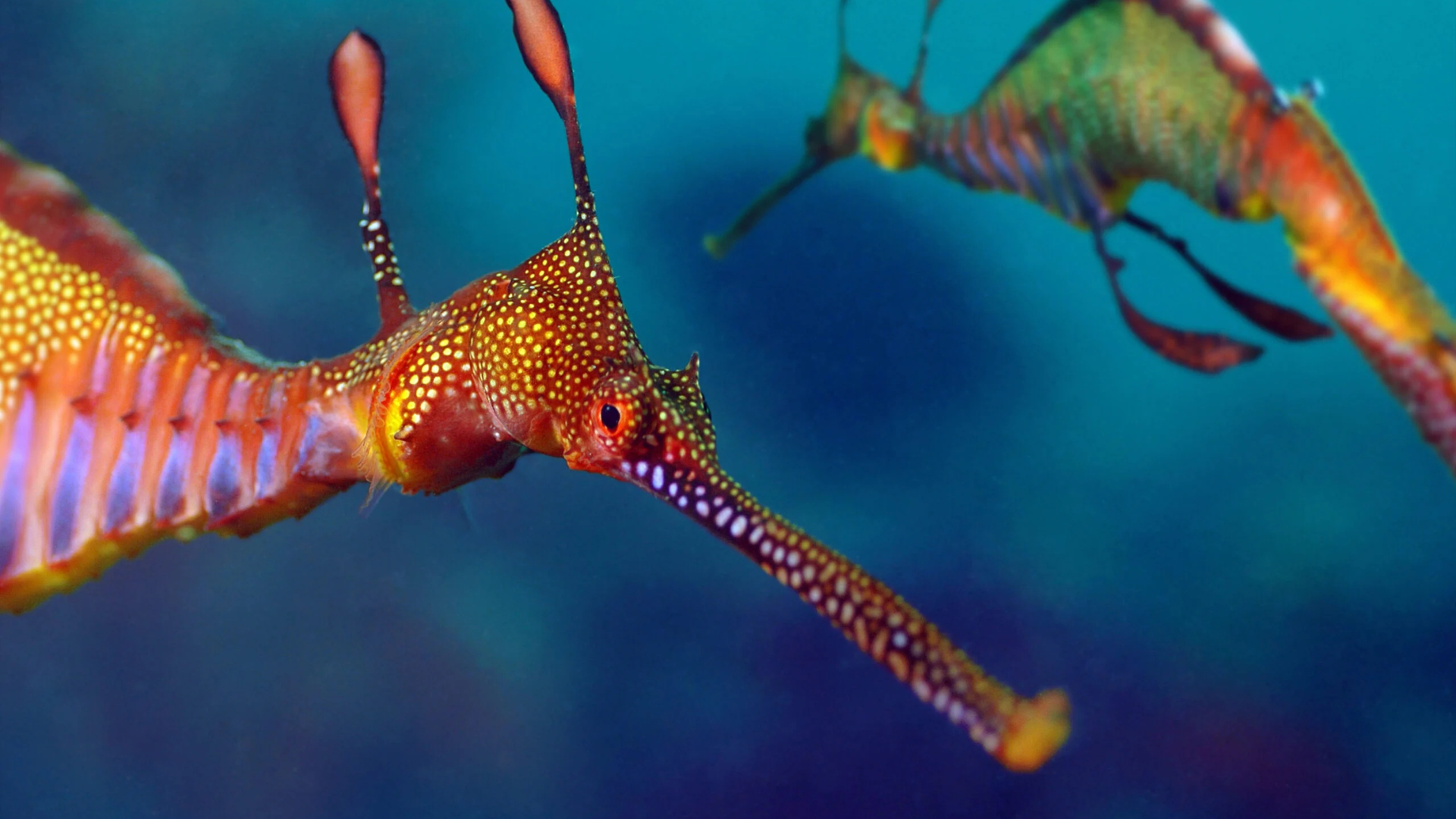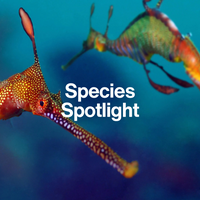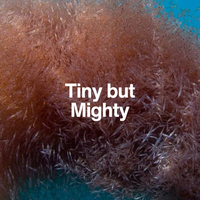The Ocean’s Sneakiest Predator
Frogfish

It doesn’t swim. It walks. It doesn’t chase. It waits. Meet the ambush artist hiding in plain sight.
Introduction
Meet the Frogfish
A master of disguise with a face only a reef could love, the frogfish (a type of anglerfish in the family Antennariidae) is one of the most bizarre and brilliant predators on the planet. With a squat body, lumpy skin, and the ability to mimic rocks, coral, or sponges, frogfish sit motionless—until it’s time to strike.
Rather than swimming, frogfish walk along the seafloor using modified pectoral fins that function like limbs. They also have their own built-in lure, used to tempt prey right to their mouths.

Fun Fact
A frogfish can strike in as little as six milliseconds—one of the fastest feeding strikes in the animal kingdom.
Biology & Behaviour
Camouflage, Lures, and Lightning Strikes
Frogfish come in a range of textures, patterns, and colours to match their surroundings—some even grow hair-like projections to look like algae.
They have a small illicium (lure rod) on their head tipped with an esca, which mimics a worm or shrimp. When a fish gets too close, the frogfish opens its mouth so fast it creates a vacuum, sucking the prey in whole.
Instead of swimming efficiently, they "walk" with limb-like fins and can inflate themselves slightly to float or bounce awkwardly through the water.

Reproduction
A Brief and Buoyant Encounter
Frogfish are solitary and only come together briefly to mate. Mating often occurs at night, with the male nudging the female toward the surface where she releases a gelatinous mass of eggs into the water column.
The male fertilises them externally, and both parents quickly part ways—often with the female becoming aggressive toward the male if he doesn’t leave fast enough.
The larvae drift as plankton before settling on the reef.


Conservation & Threats
Blending In, But Still At Risk
Frogfish are not currently listed as threatened, but like many reef dwellers, they are vulnerable to:
Coral reef degradation
due to climate change and bleaching
Pollution and sedimentation
which affect their camouflage and hunting
Overcollection
for the aquarium trade due to their strange appearance
Because they’re so well-camouflaged, population studies are difficult—which means conservation status could be underestimated.
Did you know?
Some frogfish can change their colour pattern over days or weeks to better blend with a new habitat.
Why They Matter
Patience as Power
Frogfish are reminders that nature doesn't always reward speed. Their strategy is stillness, precision, and invisibility—and it works beautifully.
In a world of flashy displays and constant motion, frogfish prove that there’s strength in silence—and power in being exactly where you need to be.

Species Overview

Species ID Card
Frogfish
Want to take this species with you? Download our printable ID card to keep learning, share with others, or use in your classroom or ocean journal.
THAT'S A WRAP
—for Now
You’ve met the masters of disguise, the deep-sea hunters, and the rainbow punchers. But we’re just getting started. The ocean is home to millions of extraordinary species—and we’re only beginning to tell their stories.
Watch this Space
New Spotlights are on the horizon. Check back soon—or follow NAUTRA to be the first to know when the next wave arrives.




